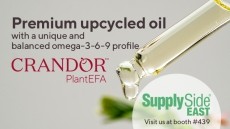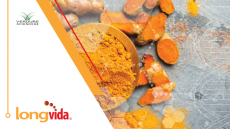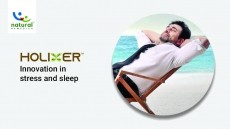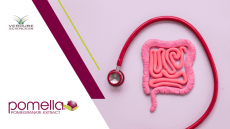Structure/function claims help consumers, even if some MDs don’t like them, expert says

Several speakers at the International Conference on the Science of Botanicals touched on the topic at the event that concluded April 11 in Oxford, MS. The event had an overarching theme of looking at the supplement industry and how it has changed in the 25 years since the advent of the Dietary Supplement Health and Education Act.
In that vein, some of the discussions trended over into asking whether some things that were put into place under DSHEA were the best of all possible worlds, or whether now that the topic has been raised of how that law might be amended, these aspects of the regulatory picture might be changed.
Utility of claims questioned
One of these was the odd position of botanicals—traditionally seen as medicines and consumed in minuscule quantities—being regulated as foods. Another was the application of structure/function language to these products, and to supplements in general.
Structure/function claims, a form of communication with the consumer that was enshrined in DSHEA, allows a dietary supplement manufacturer to make claims about how their products affect a certain structure or function in the body, such as “supports a healthy immune response.” Supplements are specifically enjoined against claiming to prevent, treat or cure diseases.
One of the speakers, Dr Tieraona Low Dog, MD, said the claims language on packages doesn’t help physicians much when trying to advise their patients on what supplements to use. Dr Low Dog is an herbal expert herself, but said that the explosion of delivery forms, dosages, competing bioavailability claims and the like has made it difficult even for someone as knowledgable as she is to keep up with what’s on the market.
“It says on supplement packages: ‘Consult your physician.’ People want to know what to take, and how much. Structure function claims are hard to interpret,” Dr Low Dog said at the event. Dr Mary Hardy, MD, another renowned expert on herbal medicine, concurred with Dr Low Dog’s assessment that these type of claims are somewhat opaque.
Claims make sense to consumers
But in the opinion of another longtime expert in the field, Roy Upton, RH Dip Ayu, founder and executive director of the American Herbal Pharmacopoeia, this harsh view doesn’t necessarily take into account what the alternatives are, and what seems to make the most sense to consumers at the point of sale.
Upton said a consumer survey conducted a number of years ago by the US Food and Drug Administration shed some light on the issue. FDA asked consumers what kind of claims they liked best: structure function claims, straight out drug claims with all of their qualifiers and side effects warnings, or qualified health claims that allow supplement products that have scientific substantiation to mention diseases on the label but that also come with a lot of caveats.
“Structure/function claims were considered the most simple and consumer friendly. Claims such as ‘Supports healthy sleep’ or ‘Supports healthy digestion’ are not ambivalent and deliver a clear consumer-friendly message of benefit. Practitioners may not like it because this language does not say what something does to digestion or exactly how it helps sleep, leaving them uninformed about how to prescribe something clinically based on pharmacological action. However, practitioners should not be dependent on product labeling to know how to prescribe an herb,” Upton told NutraIngredients-USA.
Stillborn herbal medicine category
Products based on botanicals were lumped in with other supplements during the run up to the signing of DSHEA because that was the only train that was moving at the moment, sources present at the time have said. An effort to create a category for traditional herbal products, something vaguely analogous to what exists in some other countries, was stillborn because of grave disagreements within the field.
There doesn’t seem to be much momentum behind the creation of a separate herbal medicine category as part of the ‘DHSEA 2.0’ discussions. But such a category does provide the ideal mode of communication with consumers about these products’ benefits, Upton said.
“The model already exists in the Traditional Herbal Medicine model of most countries and the NHP model of Canada. In the THM model, claims language is something along the lines of ‘Valerian has traditionally been used to promote sleep and relieve insomnia. If symptoms persist, consult your health care professional.’ This language allows for the dissemination of accurate information of how a botanical was used but allows the drug companies to maintain the perception they are the ‘real’ drugs,” he said.
Failing that, Upton said there is still a lot to like about structure/function claims.
“They’re clear and simple. Additionally, they promote the idea of promoting ‘healthy’: healthy sleep, healthy digestion, healthy immunity, etc.,” he said.














